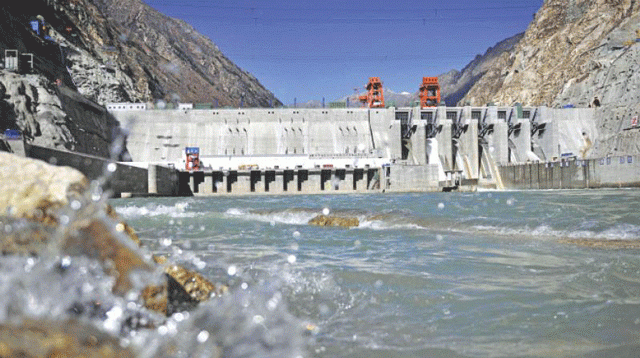
Project proposal documents hoped to address the acute power shortage and said the government intended to exploit all available energy resources to overcome the crisis. It indicated that all hydropower potential along the canal fell in flat regions of Punjab as the irrigation system was only available in these areas. However, no information was available on the hydropower potential of areas such as the Potohar region which included Attock, Rawalpindi, Jhelum, Chakwal, Khushab and Mianwali districts.
China to invest $50b to develop Indus River Cascade
Other areas on which there was little information were Gujrat, Dera Ghazi Khan and Rajanpur districts. The documents said these circumstances caused a hindrance in policy decisions for development.
The project proposal, titled Resource Mapping of Hydro Power Potential of Potohar Region, indicated that the government was going to acquire consulting services through a competitive bidding process to carry out a feasibility study of the entire area.
The study will cost an estimated amount of Rs107 million. It aimed to define hydropower potential, suitable site addresses, water availability, power potential, availability of storage, energy cost and tentative consumers.
The consulting firm would carry out the assessment of technical, environmental, financial, economic, legal, institutional, social safeguards and other aspects. The organisation would determine the electricity demand of the local community near the proposed power site and suggest the possible number of consumers generated from such plants. On the basis of these studies, a limited field work programme would also be worked out to investigate site conditions and possibilities to develop hydropower, including study for diversion of water from one catchment area to another.
The consultant will indicate the most attractive sites in each district where further studies will be conducted in order of priority of development. The government estimated 24 months for completion of these surveys from the date of the signing of the contract.
Government plans to add 41,000MW through hydropower by 2030
Hydro to thermal energy mix in the 1970s was 70:30, ideal for a feasible power sector. However, WAPDA could not invest in keeping up with the increasing demand for electricity. This resulted in a 2,000 MW gap in demand and supply.
It was earlier reduced through load-shedding and the maximum shortage rose to about 2,000 MW in the early nineties. To overcome this shortage, the Government of Pakistan introduced a “Power Generation Policy” in March 1994 and invited the private sector to install both thermal and hydel power stations and sell electricity to WAPDA.
The government also announced a policy framework and package of incentives for private sector hydel power generation projects in Pakistan in May 1995.
Published in The Express Tribune, September 7th, 2017.


















COMMENTS
Comments are moderated and generally will be posted if they are on-topic and not abusive.
For more information, please see our Comments FAQ